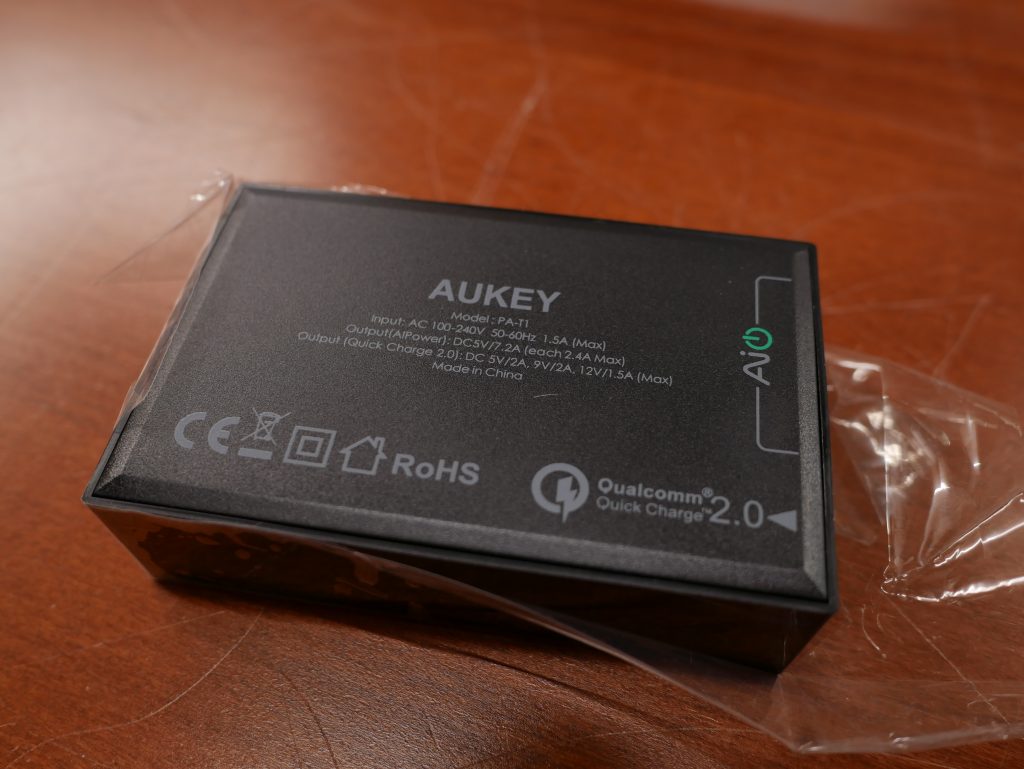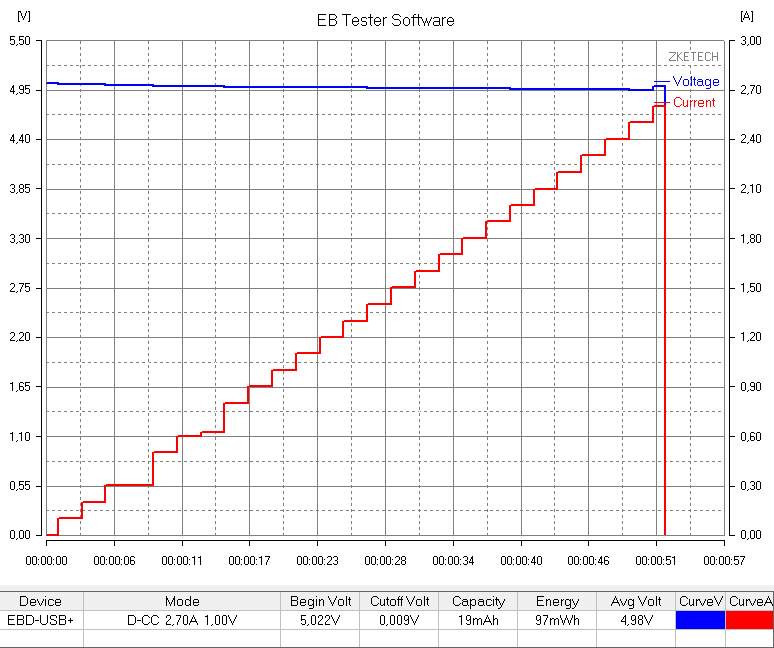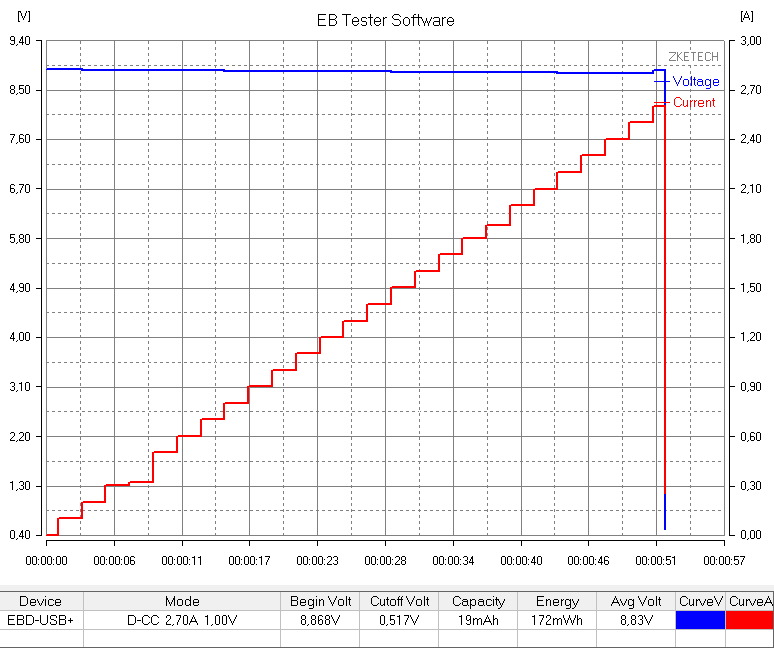Another charger review! This time it’s the Aukey PA-T1 a 5 port charger which has 4 normal ports and one Quick Charge port. I also discuss the PA-T15!
Video review
As always, I’ve made a video about live testing this charger. Check it before reading the results below!
Photos
After that, some product photos for people who want to have a closer look
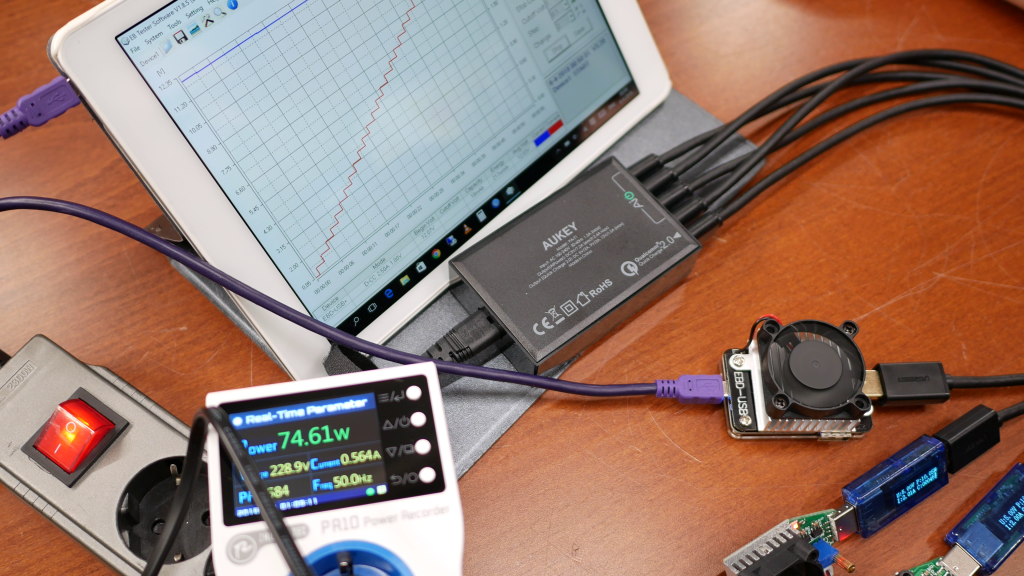
Graph measurements
As you were able to see in the video and the photo above, this charger has quite a high maximum when you use the 4 ports (Max 7A) and the Quick Charge port combined. It’s able to sustain a very decent load on the 4 ports + QC port exceeding it’s rated wattage slightly.
Single port measurement
First up, single port measurements!
1 “AI” port
During the 1 port load test the charger actually outputs enough juice (when asked) to reach the maximum of my current tester! 4A out of one port is nothing to sneeze at and it does so while maintaining respectable voltage too!
1 “QC 2.0” port only
5v
The QC2.0 port (single test) reaches up to about 2.6Amps before cutting off. Voltage remains excellent!
9v
The QC2.0 single port test at 9v basically shows the same pattern, very nice.
12v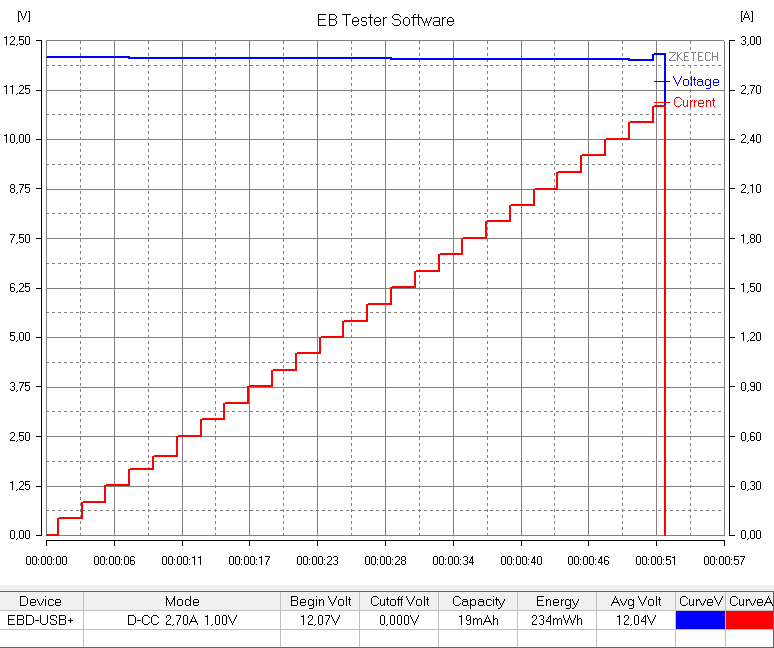
And last up 12v in the single port test and there the charger delivers a maximum of again 2.6Amps, well above its rated maximum power output! Voltage remains very stable even at those output levels!
Multi-port tests
2x 5v 2A + Tester
First up is my “standard” 3x5v 2A test using the non-QC ports. This means there is a 2x5v 2A connected and my graph tester is the third load. Here we see the amperage climb steadily but at about 3.6A the charger can’t maintain the voltage anymore and it plummets to an unusable depth of about 3.2v. This makes sense because this exceeds the 7A we saw in the video also, the 4 port non-QC ports can’t deliver more than this.
I would have rather seen a hiccup method implemented which would signal you there is a problem a bit better.
To see if this holds up with 4 loads connected, I did another test
3x5v 2A + Tester
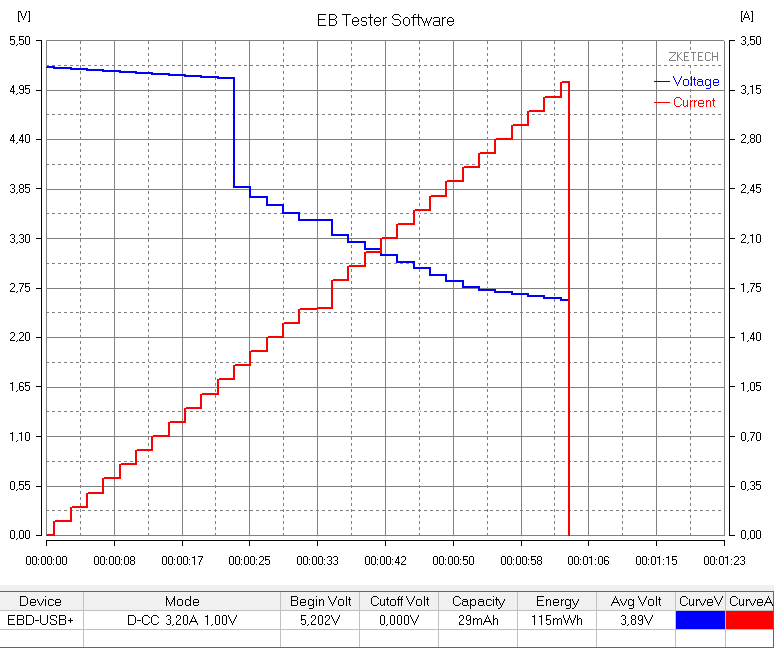 And here we see exactly as we expected above. The charger is ok as long as the 4 ports remain below 7A total output, above that the voltage plummets.
And here we see exactly as we expected above. The charger is ok as long as the 4 ports remain below 7A total output, above that the voltage plummets.
3x5v 2A + QC2.0 12v with tester
To really stress the charger I connected 6A to the 4 port circuit and did a graph of QC2.0 12v
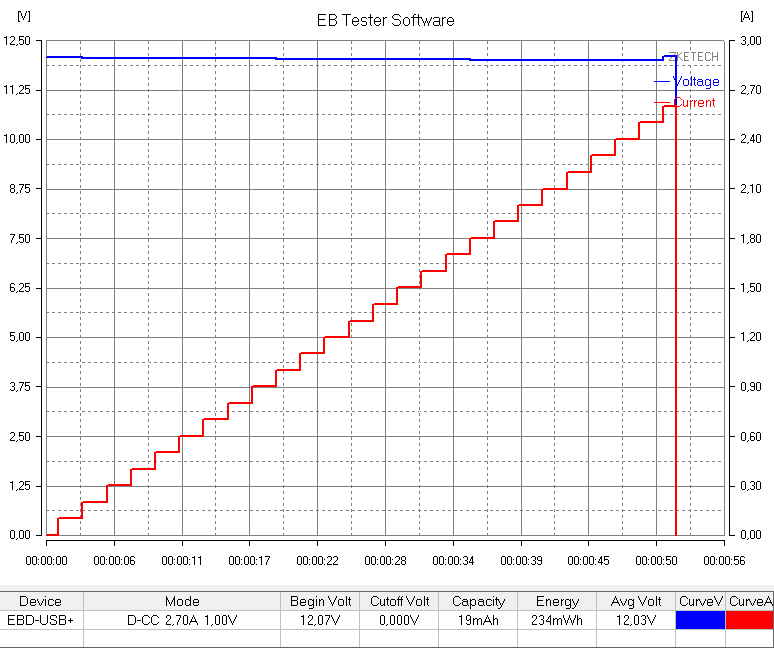 Very nice! This again confirms that although the ports share a single power supply, the regulating circuits for the 4 ports and the QC port is seperate. A very good result!
Very nice! This again confirms that although the ports share a single power supply, the regulating circuits for the 4 ports and the QC port is seperate. A very good result!
Shopping links
This Aukey branded charger can be purchased by clicking here (PA-T1). If you would like to purchase the Quick Charge 3.0 version, click here (PA-T15).
Power Measuring
If you want to buy the equipment I’m using, take a look at the following links:
AC Socket Measuring
USB Measuring
Fancy USB power logger with bluetooth and software
USB Load
Fancy USB Load with logging and app
Conclusion
As I mentioned in the video, this charger does very well, excellent even. During normal device charging you will have no problem filling all ports at the same time and see no slow down in charging speed, even with a 12v QC device lurking on the QC port at the same time. During long testing temperatures remained stable, it has a removable power cord, all-round excellent, highly recommended!
If you would like to buy this charger, check out my links just above here!



